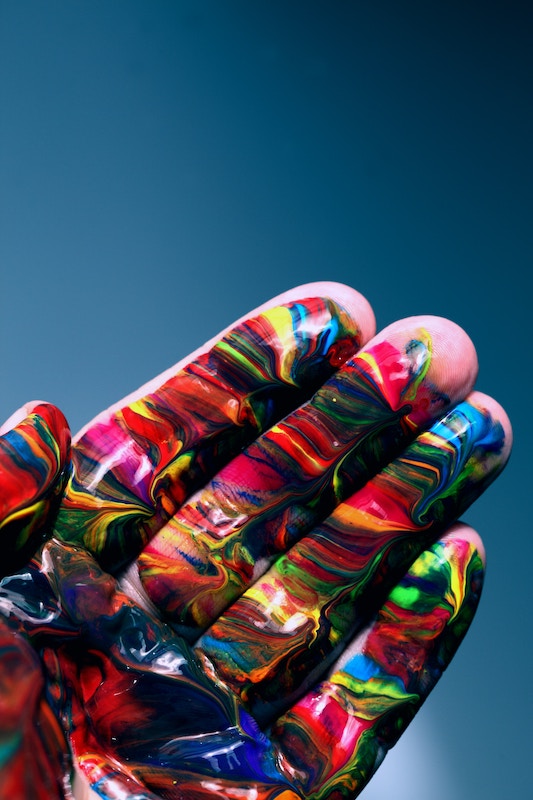If you are a healthcare professional like me, I am sure you have heard about the biopsychosocial model of health. This model was proposed by George Engel in 1977 to challenge the prevailing biomedical approach in psychiatry, as well as medicine, more broadly (Engel, 1977). The biopsychosocial model promoted a more humanistic perspective of disease and illness by acknowledging psychological and social influences on a patient’s health beyond biological and pathoanatomical deviations (Engel, 1977, 1978, 1981). Since then, healthcare professionals have adopted the model as a new way to understand the multidimensionality of many diseases and health conditions.
As a physiotherapist, this is not different. The biopsychosocial model has been one of the most advocated models in the profession (World Physiotherapy, 2021). Personally, the model helped guide my clinical practice, lectures to students, and my way of thinking. That is until I did my PhD and ultimately challenged this assumption. In my PhD, I researched and realised the model’s vast limitations regarding its applicability, theoretical clarity and claimed multidimensionality (Mescouto, 2023). One important limitation drove my entire thesis and the interest/desire to move practices beyond it: the model’s lack of attention to sociocultural and political dimensions of health.
Although the term ‘biopsychosocial’ implies that all three dimensions should be addressed, this has not been the case. Healthcare research and practice seem to over-prioritise the bio and psycho aspects and pay little attention to the social aspects (Mardian et al., 2020; Pilgrim, 2015; Suls & Rothman, 2004). In the first paper of my PhD, we observed the same pattern in physiotherapy in low back pain care (Mescouto, Olson, Hodges, & Setchell, 2022). Although the term ‘biopsychosocial’ was used, important aspects such as social, cultural, ethical, and interpersonal and institutional power dynamics – to name a few – seemed to be sidelined in physiotherapy research. Thus, throughout my PhD, I aimed to bring some of those aspects to the surface and suggest possibilities for attending well to the multidimensionality of health conditions.

Karime Mescouto (PT, PhD)
Postdoctoral Research Fellow, University of Queensland
Karime Mescouto is a physiotherapist from Brazil and a postdoctoral research fellow at RECOVER, at The University of Queensland, Australia. Her research interests include exploring and improving attention to chronic musculoskeletal pain’s sociocultural and material aspects. She is also interested in making healthcare practices more equitable and incorporating sociological and philosophical underpinnings into physiotherapy clinical and education practices.

Photo by Alexander Grey on Unsplash
Thanks to my supervisors’ amazing guidance and influence, I used sociological thinking and concepts to help me reimagine how clinical practices could move beyond the biopsychosocial model. Although I wrote a couple papers during my PhD that touched on multiple aspects that the biopsychosocial model does not fully attend to (Mescouto, Olson, Costa, et al., 2022; Mescouto, Olson, Hodges, Costa, et al., 2022), it was in my final paper (Mescouto et al., 2023) that I proposed a theoretical tool that could be helpful to think about the multidimensionality of a condition differently. I proposed that practices could engage with an ethical multiplicity.
As a physiotherapist, this is not different. The biopsychosocial model has been one of the most advocated models in the profession (World Physiotherapy, 2021). Personally, the model helped guide my clinical practice, lectures to students, and my way of thinking. That is until I did my PhD and ultimately challenged this assumption. In my PhD, I researched and realised the model’s vast limitations regarding its applicability, theoretical clarity and claimed multidimensionality (Mescouto, 2023). One important limitation drove my entire thesis and the interest/desire to move practices beyond it: the model’s lack of attention to sociocultural and political dimensions of health.
Ethical multiplicity acknowledges that social and material forces shape our daily life and healthcare practices. That is, our reality is constructed and produced through a network of relations between human social-cultural factors and non-humans’ bodies, objects, places, and things. Combining philosophers Annemarie Mol’s concept of multiplicity (Mol, 2002) and Rosi Braidotti’s nomadic ethics (Braidotti, 2006), the term ethical multiplicity draws our attention to an ethical engagement with multiple others – humans and non-humans. These concepts bring our attention to how the boundaries between social/material, body/mind/world, huma/things are artificial (Barad & Alice, 2007; Braidotti, 2013; Latour, 2005). For example, let us think about a typical day in the clinic: the physiotherapist usually focuses on what they will ask the patient and how the information will guide them in the decision-making process. Here there is an engagement with human others: the physiotherapist and the patient. This engagement could also encompass other humans, such as the clinic’s receptionist, the patient’s family or significant others, the other physiotherapists and healthcare professionals, etc. In this interaction, power, culture, norms, values, and beliefs intertwine in how we speak, move, think, and act. These human elements already move practices beyond the biopsychosocial model.
In addition to these human elements and the multiplicity of human others implied in them, a typical day in the clinic also encompasses an engagement with non-human others: things, objects, and places. This engagement is easily missed because we usually focus on human-centred approaches to guide our clinical practices. Non-human others also shape our clinical decisions and how conditions are felt, lived and contextualised. For example, posters and information on the clinic’s wall can (implicitly) signal what aspects of the treatment will likely be emphasised. If the clinic only has many pictures of anatomical structures, it might signal that only biological aspects of conditions are important to focus on. Other examples are having only the same-sized chairs in the waiting room, images of thin, white, heteronormative-looking people in the clinic’s brochures, and pictures and information depicted only in one language (usually English). In such a setting, the non-human objects and physical space signal implicit power relations and do not accommodate people from different body shapes, cultures, or languages. Making the clinics’ physical environment more inclusive may make more people feel welcomed and represented through the physical space. Thus, an ethical multiplicity helps us be attentive to those and other multiple elements that are part of our healthcare practices but are not usually given that much attention.

Photo by Ricardo Viana on Unsplash
An ethical multiplicity might provide a better understanding of how places, objects, emotions, power, bodies and professions are interconnected. Although the example I presented in this blogpost is a simplification of deeper philosophical and sociological underpinnings, such conceptualisation move healthcare practices beyond the biopsychosocial model of health. However, within my paper and my PhD, I acknowledge the limitations of this concept. For example, I did not explore in detail how an ethical multiplicity would directly attend to the entanglement between humans and environments beyond the clinic to encompass nature and environmental health issues – a fantastic endeavour by the collective Environmental Physiotherapy Association I highly admire.
In addition, by being placed in a Western context, an ethical multiplicity may (unintentionally) sideline non-Western views and traditional and Indigenous possibilities of human and non-human entanglements (Rosiek et al., 2019; Tiffany Lethabo, 2017). I also acknowledge how confronting it is to question and challenge ourselves, our assumptions and practices. Thus, an ethical multiplicity is not – and should not be – a universal model to replace the biopsychosocial model or a tool that should be universally used on all occasions. Ethical multiplicity is an invitation – perhaps a provocation – to think differently about how we practice as healthcare professionals, to challenge ways of doing and thinking about our roles in society. It is an invitation to open up possibilities and to be creative in moving our practices beyond a biopsychosocial approach. Finally, ethical multiplicity is a hope to contribute to a more relational shift in clinical and research practices. This relation encompasses more ethical and socially just healthcare practices for all human and non-human others.
References
Header image by Alice Dietrich on Unsplash
Barad, K. M., & Alice, F. (2007). Meeting the universe halfway : quantum physics and the entanglement of matter and meaning. Duke University Press.
Braidotti, R. (2006). Transpositions : on nomadic ethics. Polity Press.
Braidotti, R. (2013). The posthuman. Polity Press.
Engel, G. L. (1977). The need for a new medical model: a challenge for biomedicine. Science, 196(4286), 129-136. https://doi.org/10.1126/science.847460
Engel, G. L. (1978). The biopsychosocial model and the education of health professionals. Annals of the New York Academy of Sciences, 310, 169-187. https://doi.org/10.1111/j.1749-6632.1978.tb22070.x
Engel, G. L. (1981). The clinical application of the biopsychosocial model. Journal of Medicine and Philosophy, 6(2), 101-123. https://doi.org/10.1093/jmp/6.2.101
Latour, B. (2005). Reassembling the social an introduction to actor-network-theory. Oxford University Press.
Mardian, A. S., Hanson, E. R., Villarroel, L., Karnik, A. D., Sollenberger, J. G., Okvat, H. A., Dhanjal-Reddy, A., & Rehman, S. (2020). Flipping the Pain Care Model: A Sociopsychobiological Approach to High-Value Chronic Pain Care. Pain Medicine, 21(6), 1168-1180. https://doi.org/10.1093/pm/pnz336
Mescouto, K. (2023). Enhancing low back pain care: thinking and practising critically beyond the biopsychosocial model The University of Queensland].
Mescouto, K., Olson, R. E., Costa, N., Evans, K., Dillon, M., Jensen, N., Walsh, K., Weier, M., Lonergan, K., Hodges, P. W., & Setchell, J. (2022). ‘Engaging on a slightly more human level’: A qualitative study exploring the care of individuals with back pain in a multidisciplinary pain clinic. Health (London), 13634593221127817. https://doi.org/10.1177/13634593221127817
Mescouto, K., Olson, R. E., Hodges, P. W., Costa, N., Patton, M. A., Evans, K., Walsh, K., Lonergan, K., & Setchell, J. (2022). Physiotherapists Both Reproduce and Resist Biomedical Dominance when Working With People With Low Back Pain: A Qualitative Study Towards New Praxis. Qualitative Health Research, 10497323221084358. https://doi.org/10.1177/10497323221084358
Mescouto, K., Olson, R. E., Hodges, P. W., & Setchell, J. (2022). A critical review of the biopsychosocial model of low back pain care: time for a new approach? Disability and Rehabilitation, 44(13), 3270-3284. https://doi.org/10.1080/09638288.2020.1851783
Mescouto, K., Olson, R. E., & Setchell, J. (2023). Towards an ethical multiplicity in low back pain care: Practising beyond the biopsychosocial model. Sociology of Health and Illness, 45(3), 522-541. https://doi.org/10.1111/1467-9566.13598
Mol, A. (2002). The body multiple: ontology in medical practice. Duke University Press.
Pilgrim, D. (2015). The Biopsychosocial Model in Health Research: Its Strengths and Limitations for Critical Realists. Journal of Critical Realism, 14(2), 164-180. https://doi.org/10.1179/1572513814Y.0000000007
Rosiek, J. L., Snyder, J., & Pratt, S. L. (2019). The New Materialisms and Indigenous Theories of Non-Human Agency: Making the Case for Respectful Anti-Colonial Engagement. Qualitative Inquiry, 26(3-4), 331-346. https://doi.org/10.1177/1077800419830135
Suls, J., & Rothman, A. (2004). Evolution of the Biopsychosocial Model: Prospects and Challenges for Health Psychology. Health Psychology, 23(2), 119-125. https://doi.org/10.1037/0278-6133.23.2.119
Tiffany Lethabo, K. (2017). Humans Involved: Lurking in the Lines of Posthumanist Flight. Critical Ethnic Studies, 3(1), 162-185. https://doi.org/10.5749/jcritethnstud.3.1.0162
World Physiotherapy. (2021). Physiotherapist education framework. https://world.physio/what-we-do/education/physiotherapist-education-framework


Brilliant blog post. Thank you EPA and Karime for this insightful and thought provoking article. I really enjoyed the opening on Mol’s and Braidotti’s work. I will definitely have a look at their philosophies.